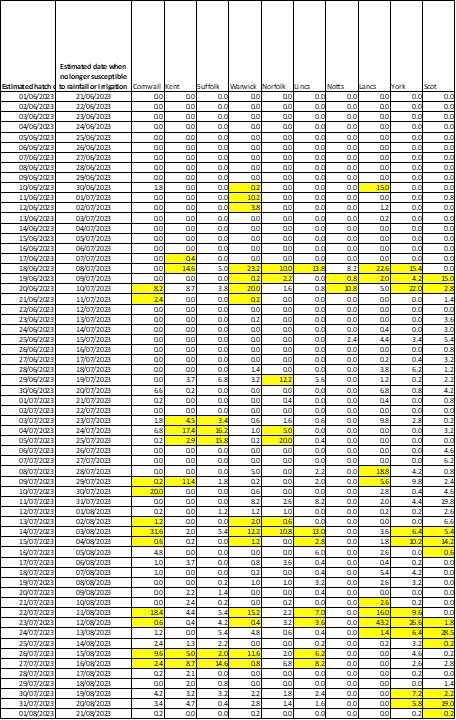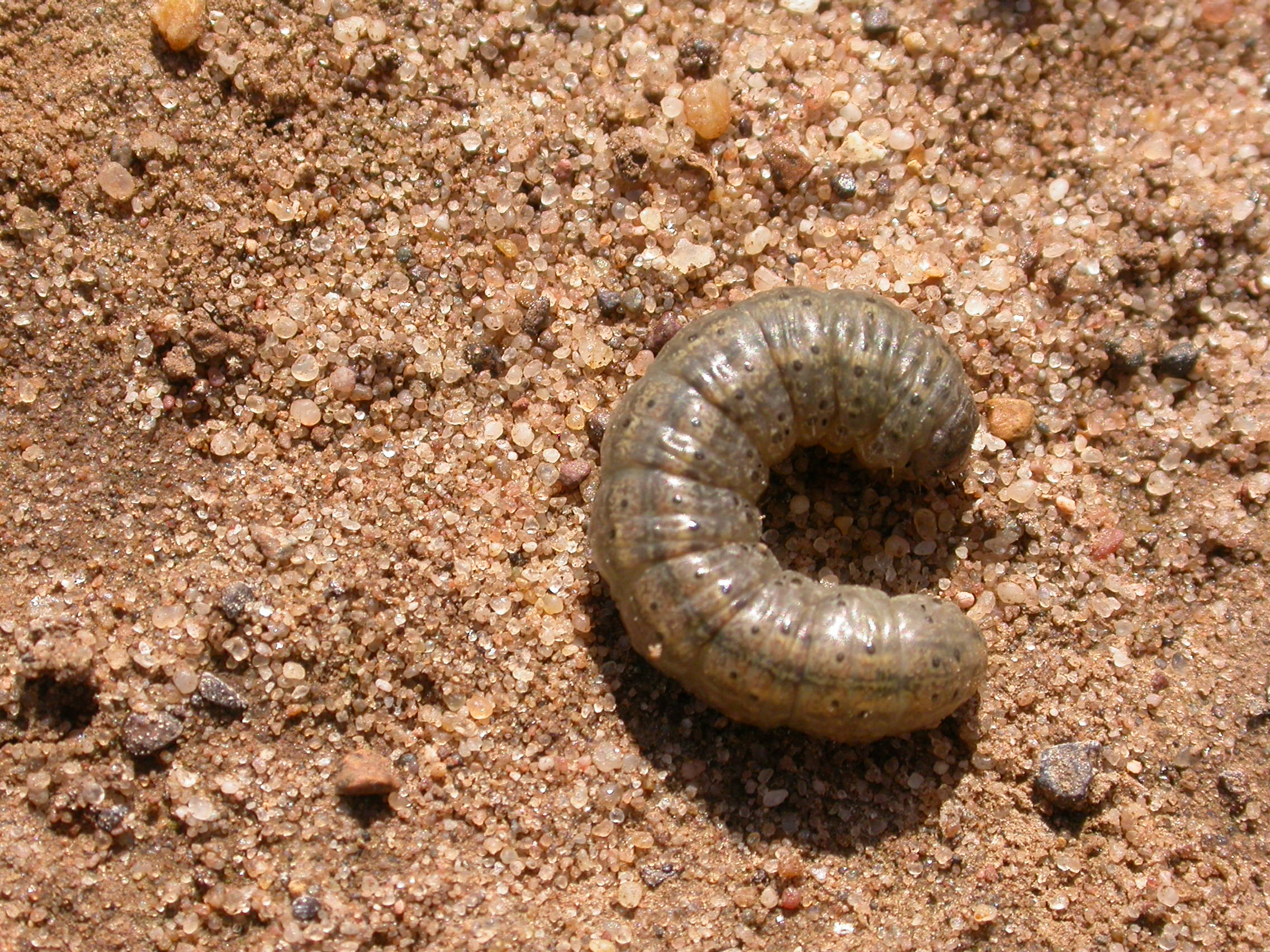Cutworm forecast
The 'Cutworm Risk Model'
The cutworm model is based on research by Bowden et al (1983). It uses weather data to predict the rate of development of turnip moth eggs and caterpillars. It can also be used to predict the level of rain-induced mortality among the early-instar caterpillars.
Unhatched turnip moth eggs and the older, subterranean cutworms are largely invulnerable to the effects of the weather and insecticides. The two early caterpillar instars differ, however. If there is substantial rainfall (defined as 10 mm or more of rain falling in showers of moderate intensity over a 24-hour period) whilst these caterpillars are feeding above ground then this causes high mortality among them. They are also vulnerable to insecticides and irrigation whilst feeding on the foliage.
The weather data made available for the cabbage root fly and carrot fly forecasts has been used to produce a simplified interpretation of the model.
Egg-laying - we can make the assumption that the earliest egg-laying date will be after flight begins. The cutworm flight forecast indicates that in Cornwall flight started around 16 May but for the majority of sites towards the south of Britain it started around 25 May.
Egg hatch - the cutworm model indicates the start of egg hatch. At the moment this is predicted to start approximately 17 days after egg-laying - so from early June onwards at the warmest sites.
Period of vulnerability to rainfall/irrigation/insecticides - the cutworm model indicates that this lasts about 20 days from hatching.
Rainfall events that cause high mortality of young cutworms are defined as 10 mm or more of rain falling in showers of moderate intensity over a 24-hour period. The table below (for 2023) highlights in yellow the dates for each of the sets of weather data when such a rainfall event occurred (either in one day or between two consecutive days). The cutworm model predicts that any cutworms which have hatched within 20 days before the rainfall event will be killed. In terms of 'risk' and the need to take action against cutworms, prolonged dry periods may be a cause for concern.
It is important to remember that rainfall is often very localised, so your own weather records will be more appropriate. The model has no information about 'abundance' - so whether large numbers of eggs have been laid on a particular crop.
This is the output for 2023 for daily rainfall data up to 1 August (mm).

Reference: Bowden, J., Cochrane, J., Emmett, B. J., Minall, T. E. & Sherlock, P. L. (1983). A survey of cutworm attacks in England and Wales, and a descriptive population model for Agrotis segetum (Lepidoptera: Noctuidae). Annals of Applied Biology 102 29-47.

